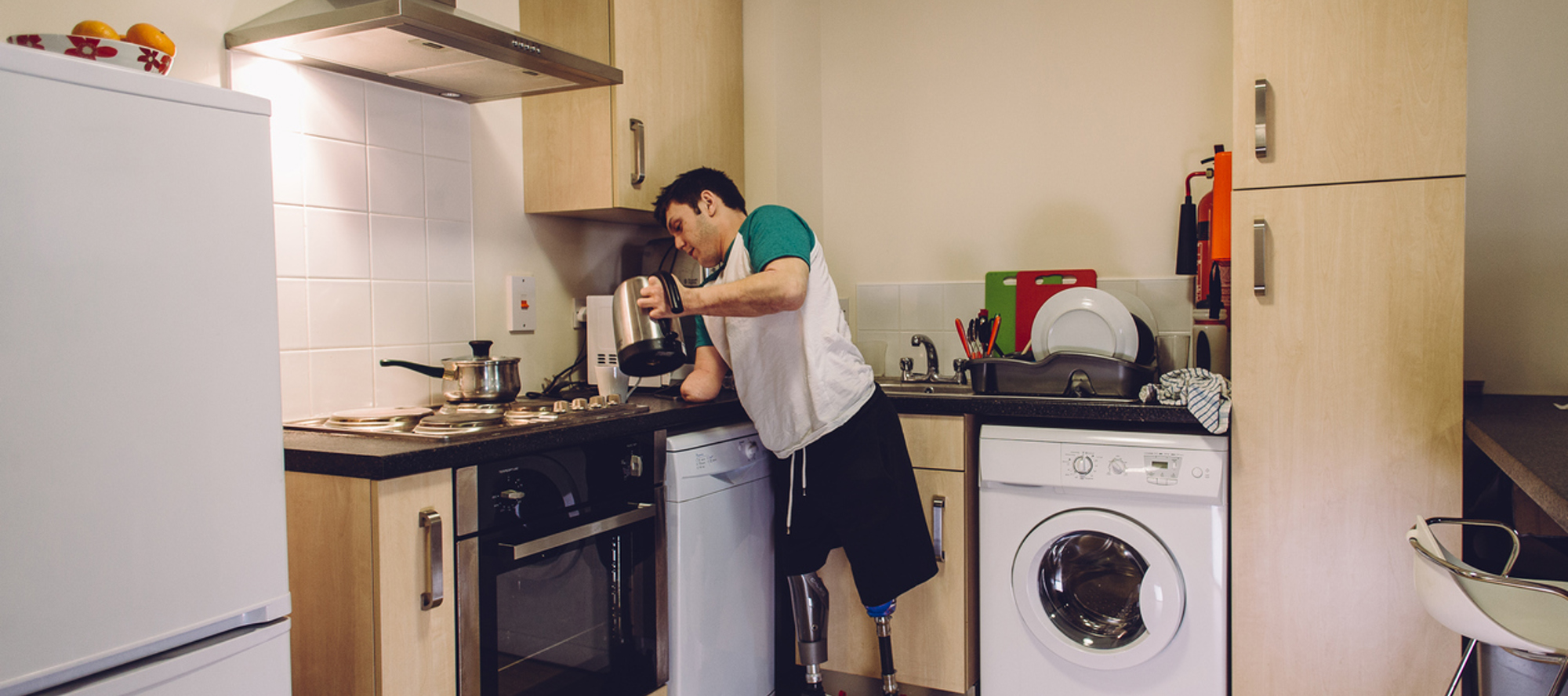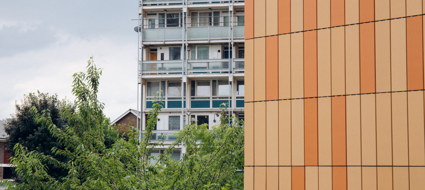Everyone should have access to safe, secure housing that meets their needs, but this is not the case for many disabled people. A new Frontline Briefing aims to support practitioners to develop their understanding of disabled people’s relationship with housing and the importance of using the social model of disability when assessing housing needs and providing support.
Whilst experiences of housing vary, and not all experiences are negative, disabled people encounter difficulties accessing all types of housing and continue to live in unsuitable, inaccessible or undesirable accommodation that negatively impacts their everyday lives.
In 2011, motivated by a drive to emphasise the inequity of disabled people’s experiences of housing, my book Disabled People and Housing: Choices, Opportunities and Barriers was published. Drawing primarily on disabled people’s own voices but complemented by insights from representatives within disabled people’s organisations, housing associations, estate agents, mortgage brokers, financial advisers and risk assessors. It highlighted the broad range of barriers that disabled people encounter within housing. Sadly, more than a decade later, very little has changed.
Accessible housing is crucial to achieving independent living and a sense of ‘home’, yet accessible properties in the general housing stock are limited. Research shows that only 7% of homes offer minimal accessibility features (EHRC, 2018) and that at current levels, local authority waiting lists in England for wheelchair-accessible properties mean that a wheelchair user joining the list today could be waiting up to 47 years for an accessible home (Habinteg, 2022).
Disabled people have also been shown to disproportionately live in social housing, with the Office for National Statistics (ONS, 2022) stating that 24.9% of disabled people lived in social renting in 2022 compared with 7.9% of non-disabled people. Furthermore, 39.7% of disabled people owned their own home in 2022 compared with 53.3% of non-disabled people.
The number of disabled people and people using mental health services among the homeless population has also significantly increased (Blood, 2023), with eight out of ten people who are sleeping rough having been diagnosed with a mental health issue (Crisis, 2023). This has been exacerbated by the cost-of-living crisis (Stone and Wertans, 2023).
These are just some of the ways in which disabled people experience disadvantage within housing and this urgently needs addressing. Disabled people represent a large proportion of the population, and as such, their housing needs should not be deemed a minority issue, even more so in an ageing society. This is where the social model of disability comes in.
Traditional models of disability - which regard a person as being disabled by their impairment or condition, leading to assumptions of dependency and the need for care - have tended to dominate housing policy and provision for disabled people. This has resulted in either disabled people’s needs and preferences being neglected within housing, or provision which is specialised and segregated.
The social model, on the other hand, recognises that disability is not something that is caused by a person but rather is done to someone (Swain et al., 2003) and as such, it is the environment - physical, social and cultural - that should change, not the individual.
Whilst we have seen greater recognition of the importance of the social model within the public sector in recent years, the application of its core principles requires stronger integration, and housing and social care practitioners are central to this process.
In a new Research in Practice publication, I outline the value of the social model perspective, providing practical advice and suggestions for utilising this important tool in practice and moving forward in the social care context.
A new Frontline Briefing provides an essential resource for practitioners to develop their understanding of disabled people’s relationship with housing and the importance of using the social model of disability when assessing housing needs and providing support.
It is shown that barriers to suitable housing are wide-ranging and include a variety of constraints which can be categorised as physical, communication/information, attitudinal and financial, but also that recognition of diversity amongst disabled people within provision is essential.
Embedding the social model of disability within housing policy and practice can ensure:
- The adoption of a more holistic approach to provision that considers different barriers, diverse experiences, changing needs and family or household circumstances.
- Practitioner and service provider reflection on provision and the sharing of best practice.
- Recognition of the centrality of lived experience and co-production.
- Greater focus on integrated provision and the delivery of joined-up services.
Frontline practitioners within health and social care settings play a crucial role in supporting and empowering disabled people to ensure that housing needs and preferences are understood and met. I hope this resource goes some way to supporting practitioners to achieve this.
References
- Blood, I. (2023). Working together across the housing and social care workforce. Devon: Research in Practice.
- Crisis (2023). Mental Health.
- Equality and Human Rights Commission (EHRC) (2018). Housing and disabled people, Britain’s hidden crisis.
- Habinteg (2022). ‘Wheelchair users subjected to decades-long wait for new accessible housing’, News and campaigns.
- Hemingway, L. (2011). Disabled people and housing: Choices, opportunities and barriers. Bristol: The Policy Press.
- Office for National Statistics (2022). Disability and Housing Dataset.
- Stone, B. and Wertans, E. (2023). Homelessness and Disability in the UK. Centre for Homelessness Impact.
- Swain, J., French, S. and Cameron, C. (2003). Controversial Issues in a Disabling Society. Buckingham: Open University Press.



